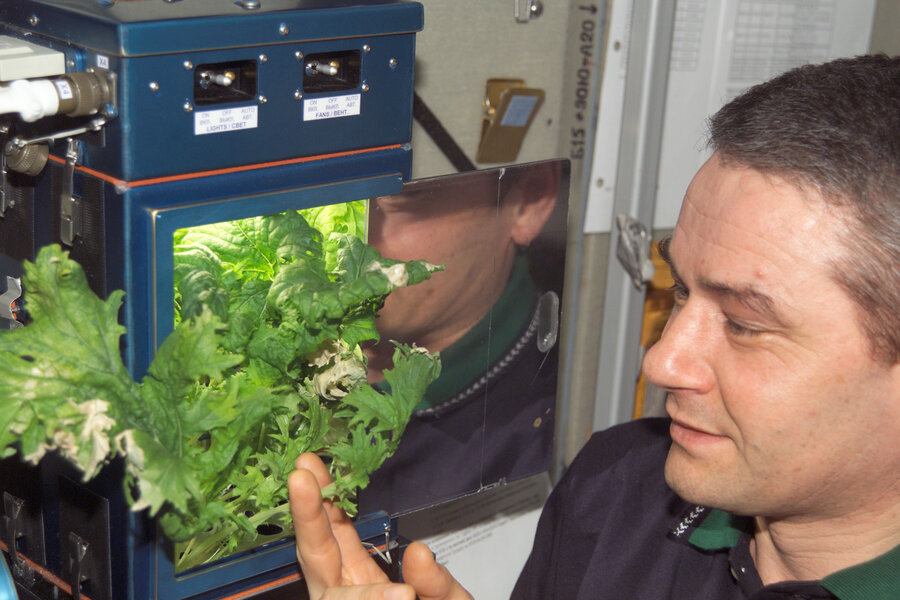ISS astronauts dine on space lettuce. Is this the future of farming?
Loading...
Even astronauts have to eat their vegetables.
On Monday, the crew aboard the International Space Station will for the first time dine on fresh, space-grown food, NASA announced. The vegetables – a type of red romaine lettuce dubbed “Outredgeous” – were grown on and harvested from the station’s plant growth laboratory, known as the Vegetable Production System or Veggie, as part of an effort to grow healthy, sustainable food for long trips in outer space.
“The farther and longer humans go away from Earth, the greater the need to be able to grow plants for food, atmosphere recycling, and psychological benefits,” Dr. Gioia Massa, NASA payload scientist for Veggie at the Kennedy Space Center in Florida, said in a statement. “I think that plant systems will become important components of any long-duration exploration scenario.”
The Veggie system, developed by Orbital Technologies Corp. in Madison, Wis., and tested at Kennedy before flight, features a flat panel bank with red, blue, and green LEDs to provide the plants with artificial light. The system also relies on plant “pillows” that contain “‘space dirt’ and slow-release fertilizer,” Trent Smith, Veggie project manager at Kennedy, said in a NASA explainer video.
“Wicks inserted into the bags draw water into the soil where it cannot float away,” allowing the plants to absorb nutrients in a microgravity environment, Mr. Smith said.
The first pillows were activated in May 2014. After 33 days of growth, the ISS crew harvested the plants and sent them back to the Kennedy Center, where they went through food safety analysis. US astronaut Scott Kelly activated the second set of pillows on July 8. On Monday he and his fellow crew members will “clean the leafy greens with citric acid-based, food safe sanitizing wipes before consuming them,” according to the NASA statement.
The astronauts will feast on half the vegetables and leave the other half for later analysis on Earth.
More than providing healthy food to crew members in space, researchers behind the Veggie system also seek to use gardening as a way to reduce psychological risks on a long-term space mission, such as NASA’s planned journey to Mars.
“The Veggie experiment is currently the only experiment we are supporting which involves evaluating the effects of plant life on humans in space,” Alexandra Whitmire, behavioral health and performance research scientist for NASA's Human Research Program, said in a statement. “Future spaceflight missions could involve four to six crew members living in a confined space for an extended period of time, with limited communication.... it will be important to provide training that will be effective and equip the crew with adequate countermeasures during their mission.”
Such countermeasures include meaningful work – something the plant laboratory could provide, Dr. Whitmire said.
There’s also potential for the Veggie system to have an impact on growth and biomass production on Earth, especially in conditions where artificial light and water conservation are necessary, according to Dr. Massa.
"We hope to increase the amount and type of crop in the future, and this will allow us to learn more about growing plants in microgravity," she said. "We have upcoming experiments that will look at the impacts of light quality on crop yield, nutrition and flavor, both on Earth and in space."








